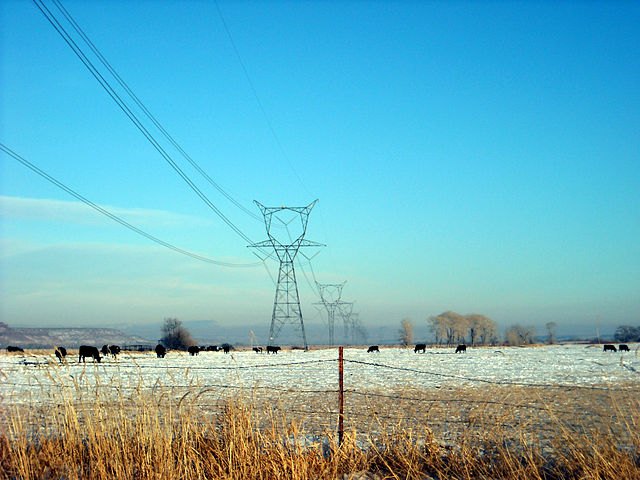Three-phase electric power
Three-phase electric power is a common type of alternating current (AC) used in electricity generation, transmission, and distribution. It is a type of polyphase system employing three wires and is the most common method used by electrical grids worldwide to transfer power.
Three-phase transformer with four-wire output for 208Y/120 volt service: one wire for neutral, others for A, B and C phases
The first AC motor developed by Italian physicist Galileo Ferraris. This was a two-phase motor and required four wires.
Three-phase electric power transmission lines
Three-phase transformer (Békéscsaba, Hungary): On the left are the primary wires, and on the right are the secondary wires.
Alternating current (AC) is an electric current that periodically reverses direction and changes its magnitude continuously with time, in contrast to direct current (DC), which flows only in one direction. Alternating current is the form in which electric power is delivered to businesses and residences, and it is the form of electrical energy that consumers typically use when they plug kitchen appliances, televisions, fans and electric lamps into a wall socket. The abbreviations AC and DC are often used to mean simply alternating and direct, respectively, as when they modify current or voltage.
Three-phase high-voltage transmission lines use alternating currents to distribute power over long distances between electric generation plants and consumers. The lines in the picture are located in eastern Utah.
The Hungarian "ZBD" Team (Károly Zipernowsky, Ottó Bláthy, Miksa Déri), inventors of the first high efficiency, closed-core shunt connection transformer
The prototype of the ZBD transformer on display at the Széchenyi István Memorial Exhibition, Nagycenk in Hungary







